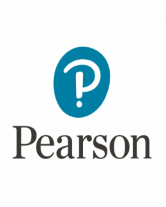Lesson Summary
This is a high school language arts lesson. During the lesson, students will summarize, verbally and in writing, the short story "Confessions of a Humorist" by O. Henry.
Objectives
The students will read a short story and use a graphic organizer to note the main points of the short story.
The students will write a summary of the short story that will include characters, setting, conflict, and resolution.
Materials
Procedure
Demonstration
Ask students whether they find it easier to summarize a short story, a play, or a novel. Point out that although novels and plays are typically longer than short stories, all contain characters, a setting, a conflict, and a resolution. Therefore, these works of fiction, regardless of their length, can be summarized in the same way.
Distribute a copy of a story map. Have students read "Confessions of a Humorist" by O. Henry, which can be found at http://www.classicreader.com/read.php/sid.6/bookid.1518. Then fill out the story map for the short story as a class.
This is an example of the content in the story map.
Characters: the narrator, Louisa, Guy, Viola, Peter Heffelbower
Setting: The narrator's home and neighborhood
Conflict: The narrator becomes a professional humorist and is first very successful but then becomes joyless and struggles to come up with witty material.
Main Events: The narrator becomes professional humorist; narrator steals material from friends and family; narrator visits an undertaking establishment and becomes friendly with the owner; narrator loses his writing job.
Resolution: The narrator becomes a partner in an undertaking establishment and finds joy again in his life.
Pair students and have them use their story maps to verbally summarize the short story to one another. Talk about any differences or similarities in their summaries. Point out that only the main point of the story should be retold. In this short story, O. Henry includes information, such as what the narrator and his wife ate at their celebratory dinner or what the couple did with their money, that contributes to the story and the characterization of the narrator but is not essential and therefore should not be included in the summary.
Have students use their story map to write a paragraph that summarizes "Confessions of a Humorist." Explain that students should use their story map as an outline for their paragraph; their summary should tell who the main characters are, what the conflict is, what the main events are, and how the story ends. Instruct students to use transition words such as then, after, as a result, and finally. Encourage students to exchange their written summaries and compare them.
Guided practice
Have students select a work of fiction to summarize (preferably a play, a short story, or a novel) that they recently read in class or for leisure. First have them use a story map to outline the work, and then have them write a paragraph that summarizes the work. Encourage students to then reduce their paragraph to a two-sentence summary.
Assessment
Evaluate students' understanding of summarization by asking them to write a paragraph that defines a summary and explains how to summarize a work of fiction. Evaluate their written summaries of the O. Henry short story. Have students write a short paragraph that gives some examples of interesting information contained in the work of fiction that was not included in the summary and then explain why it wasn't included.

During this high school language arts lesson, students will summarize, verbally and in writing, the short story "Confessions of a Humorist" by O. Henry.



